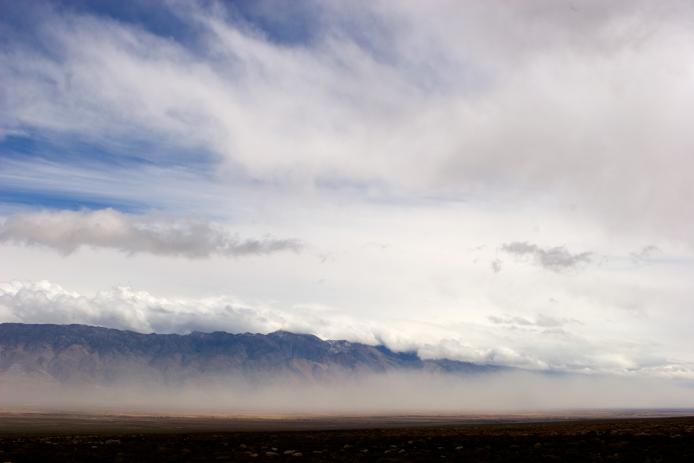
Project DUSTORM
The Experiment
Could a dust storm in New Mexico influence a thunderstorm in Missouri?
The scientists behind Project DUSTORM aimed to answer just that question. With scientific aircraft stationed around the country and help from citizen scientists, NSF NCAR researchers investigated how airborne particles like dust impacted the formation of hail and thunderstorms across the central United States. This research helped improve weather forecasts, particularly for dangerous or damaging storms.
The Instruments
Many scientific instruments are designed and fabricated on site at NSF NCAR!

This variable width slit jet impactor was developed specifically for Project DUSTORM. It was designed to allow scientists to control the size of the airborne particles, or aerosols, that were collected. This instrument filtered out smaller aerosols. Once the particles were filtered through the impactor, they were collected on microscope slides for later study.
In these photos scientists and engineers outfit an aircraft with the instruments needed to collect data for the experiment.
Can you spot the instruments mentioned here in any of the images?

Citizen Scientists
DUSTORM researchers enlisted residents in states including Oklahoma, Missouri, Iowa, and Indiana to collect hailstones, bag them, and freeze them. Once the hail samples were retrieved, NSF NCAR scientists studied their composition to learn more about how they formed.
Researchers were particularly interested in hailstones larger than a walnut--and this team nailed it!

The Research
Student Lynn Bolton (left) and Sonia Navia Gitlin, a scientist in the Atmospheric Chemistry Division, study hailstones collected during Project DUSTORM.
Scientists analyzed data collected from aerosol samples, hailstones, and weather stations to learn more about how storms form, and to better predict severe weather.




